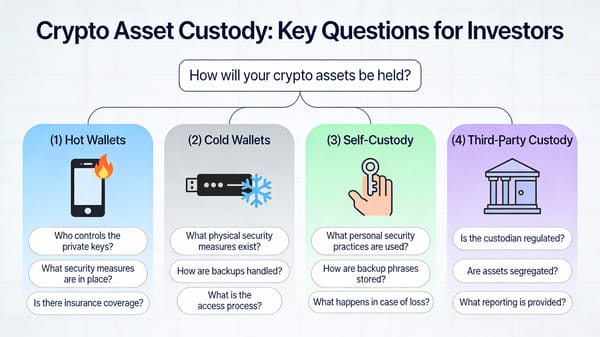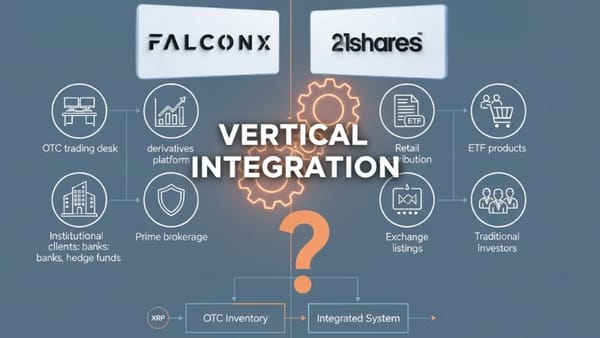When Crypto Veterans Miss the Revolution: Why Traditional Analysis Is Failing the New Digital Asset Era
Crypto veterans are missing the revolution: TradFi-DeFi convergence is rewriting market rules. Why traditional crypto analysis is failing, what metrics actually matter now, and how institutional integration is exposing knowledge gaps even longtime holders won't admit.

The cryptocurrency landscape is undergoing a seismic transformation that's leaving even seasoned investors scrambling to understand what they're holding—and many are discovering their decade of experience might be teaching them the wrong lessons.
The Old Playbook Is Burning
For years, crypto traders operated in a parallel universe to traditional finance, measuring success through Bitcoin dominance charts, altcoin seasons, and halving cycles. This worked when digital assets existed in isolation—a speculative sandbox disconnected from the real economy. But 2024 and early 2025 have demolished that wall. The approval of spot Bitcoin ETFs, institutional custody solutions from BlackRock and Fidelity, and the rapid tokenization of real-world assets have fundamentally altered what "crypto" even means.
The uncomfortable truth: Many crypto veterans are intellectually unprepared for this convergence. They understand blockchain trilemmas and can debate proof-of-stake versus proof-of-work, but lack fluency in the traditional finance metrics now driving institutional capital allocation decisions. When JPMorgan's Onyx processes billions in tokenized repo transactions, or when Siemens issues €300 million in digital bonds on-chain, traditional crypto analysis tools become dangerously inadequate.
The TradFi-DeFi Convergence Nobody Was Ready For
The blending of traditional finance and decentralized finance isn't creating a hybrid—it's creating an entirely new asset class that requires bilingual fluency. Consider the metrics that now matter:
Traditional Finance Indicators Now Relevant to Crypto:
- Federal Reserve policy decisions and interest rate trajectories
- Treasury yield curves and their impact on risk-on/risk-off sentiment
- Corporate earnings reports from blockchain-integrated companies
- Institutional flow data from custodians like Coinbase Prime
- Macroeconomic indicators (CPI, unemployment, GDP) affecting capital allocation
New Hybrid Metrics Emerging:
- On-chain treasury management by traditional corporations
- Stablecoin circulation as a proxy for dollar demand in emerging markets
- Real-world asset tokenization volume (currently exceeding $12 billion across protocols)
- DeFi total value locked weighted by institutional participation
- Cross-chain liquidity flows between regulated and permissionless systems
The shift is profound. A crypto investor who ignores the FOMC meeting schedule is now as negligent as a stock trader who ignores earnings season. Yet many crypto natives still dismiss these "boomer metrics" while wondering why their technical analysis keeps failing.
The Knowledge Gap at the Heart of Crypto Maximalism
Here's where it gets uncomfortable: A significant portion of long-time crypto holders—including influential voices on social media—operate with what might charitably be called "first-layer understanding." They can recite supply caps and retweet bullish price predictions, but struggle to explain:
- How institutional custody actually works and why it matters for asset classification
- The difference between synthetic and physical settlement in crypto ETFs
- Why stablecoin reserve composition affects systemic risk
- How cross-border payment rails actually compete with correspondent banking
- What "real-world utility" means beyond theoretical use cases
This isn't about intelligence—it's about intellectual honesty. The cheerleading culture in crypto communities often rewards conviction over comprehension. Admitting you don't understand how SWIFT integration with blockchain networks affects competitive dynamics feels like weakness in a space that values unwavering belief.
XRP and Ripple: A Case Study in Missed Nuance
The XRP community exemplifies both the passion and the problem. Many holders can cite the SEC lawsuit developments chapter and verse, but fewer can articulate:
- How Ripple's partnership with the Bank for International Settlements on cross-border CBDC trials affects long-term value proposition
- Why institutional corridor liquidity matters more than retail exchange volume
- How XRP Ledger's recent AMM integration changes DeFi competitive positioning
- The difference between RippleNet adoption and XRP token utility
For XRP specifically, the convergence of TradFi and DeFi creates unprecedented opportunity—but only for holders who understand that success now depends on:
- Regulatory clarity enabling institutional adoption (not just lawsuit resolution)
- Integration with existing financial infrastructure rather than replacement
- Measurable payment corridor efficiency compared to SWIFT alternatives
- Liquidity depth attractive to treasury operations at major corporations
- Interoperability with emerging CBDC frameworks globally
The XRP price won't move on memes or countdown timers. It will move on announcements like financial institutions integrating ODL (On-Demand Liquidity) into treasury operations—news that requires understanding both crypto rails and traditional correspondent banking to properly evaluate.
The New Analytical Framework: What Actually Matters Now
Investors who want to survive this transition need to develop dual-fluency:
Stop relying on:
- Bitcoin dominance as a market timing tool (institutional flows don't follow retail patterns)
- Four-year halving cycle predictions (macro policy now overwhelms supply dynamics)
- "Altcoin season" rotation theories (utility tokens and governance tokens have diverged)
- Pure on-chain metrics without context (wash trading and incentive farming distort data)
Start tracking:
- Institutional custody growth rates and who's custodying what
- Regulatory developments in major jurisdictions (EU's MiCA, US stablecoin legislation)
- Real-world asset tokenization pilots by major financial institutions
- Corporate treasury adoption of blockchain payment rails
- Central bank digital currency trials and their private sector integration plans
The Uncomfortable Questions
If you're holding crypto assets—especially utility tokens like XRP, governance tokens, or "Web3" projects—ask yourself:
- Can I explain my investment thesis to a traditional asset manager without using tribal language?
- Do I understand how macroeconomic conditions affect my holdings specifically?
- Can I identify which traditional finance metrics now impact my investment?
- Do I know what my token actually does in technical terms, or just what the marketing says?
- Am I prepared for a future where "crypto returns" correlate more closely with regulated financial markets?
The honest answers to these questions separate investors from gamblers.
Conclusion: Evolution or Extinction
The cryptocurrency market is maturing whether participants like it or not. The wild west speculation phase is giving way to institutional integration, regulatory frameworks, and actual utility. This doesn't mean the end of innovation—it means innovation must now deliver measurable value rather than theoretical promise.
For investors, the choice is stark: Develop literacy in both decentralized and traditional finance, or watch from the sidelines as the industry transforms around you. The people who win this next phase won't be the loudest cheerleaders or the most convicted HODLers—they'll be the ones who understand how tokenized money market funds interact with on-chain lending protocols, why that matters, and what it means for their portfolio.
The revolution isn't being televised on Crypto Twitter. It's happening in boardrooms, regulatory offices, and treasury departments. And it requires a vocabulary most crypto veterans never bothered to learn.
Sources
- BlackRock iShares Bitcoin Trust
- Fidelity Digital Assets
- JPMorgan Onyx Platform
- Siemens Digital Bond Issuance
- RWA.xyz - Real-World Asset Tokenization Data
- Federal Reserve FOMC Calendar
- SWIFT Payment Solutions
- SEC vs. Ripple Case Updates
- Ripple-BIS Partnership
- XRP Ledger AMM Integration
- Coinbase Prime Institutional Services
DISCLAIMER: This newsletter is for informational purposes only and does not constitute investment advice, advertising, or a recommendation to buy, sell, or hold any securities. This content is not sponsored by or affiliated with any of the mentioned entities. Investments in cryptocurrencies or other financial assets carry significant risks, including the potential for total loss, extreme volatility, and regulatory uncertainty. Past performance is not indicative of future results. Always consult a qualified financial professional and conduct thorough research before making any investment decisions.



